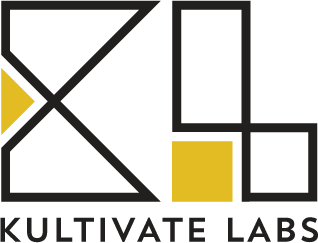Cultural Homes in Motion: What Artists Taught Us About the Future of Balay Kreative
As Kultivate Labs reimagines what cultural hubs can look like in 2026 and beyond, we’ve been in deep conversation with the people who shape the work most: our artists. From our recent in-person outreach session to reflections on long-standing creative communities—and even the rise of unexpected cultural hubs like Seafood City—one thing is clear: Filipino arts spaces are evolving, and our community is evolving with them.
This piece captures three threads of that story.
POV: You joined us dreaming up what the next version of Balay Kreative could look like — together. 🌿✨ Source: instagram.com/balaykreative
1. What Artists Told Us: Learning From Our Balay IRL Outreach
Our November 17 in-person outreach session reaffirmed something powerful: artists are still deeply invested in building a shared creative future with Kultivate Labs. The transcript reveals several key themes that surfaced across stations and breakout groups.
A hunger for community—not just space or resources
Artists certainly named concrete needs like affordable studios, presentation spaces, and equipment, but an equally strong theme emerged: the emotional and cultural ecosystem matters. Artists talked about security blankets, full fridges, and the nourishment of being around others who "get it."
“Seen and Unseen”: Identity, belonging, and the complexity of creative work
The “seen/unseen” exercise unlocked personal stories. Artists shared where they felt embraced—and where they felt misunderstood. Some noted feeling more seen in Filipino cultural spaces than in mainstream ones, while others described complex identity tensions.
This confirmed something we’ve always known: Balay Kreative isn’t only about art—it’s about identity, healing, and belonging.
Artists want motion, cross-pollination, and collaboration
One standout theme was the desire for environments where creativity flows between disciplines:
Filmmakers watching textile artists
Musicians learning from dancers
Workshops that fuse practices
Group projects that all residents contribute to
Artists also expressed interest in field trips to other cultural hubs—locally or beyond.
This is more than feedback. It’s a blueprint for what artists believe a cultural home should feel like—alive, collaborative, intergenerational, emotionally safe, and rooted in Filipino cultural values like kapwa.
We hosted a Focus Group at KOHO Creative Hub in Japantown, San Francisco to explore ideas from the survey in real time. This was an opportunity to co-create, ask questions, and envision a space that reflects our shared values. The creative juices were flowing — from hands-on art stations to collaborative jam sessions — a space where imagination had no limits. 🎨💭 Surrounded by Balay artists, alumni, new & old friends, we explored what community, creativity, and belonging can become in our next chapter.
2. A Return to Roots, A Leap Forward
In our upcoming blog post, “Balay Kreative 2.0: A Return to Roots, A Leap Forward,” we share our renewed commitment to place-based work rooted in SOMA Pilipinas. That story captures what Balay has always tried to be:
A creative refuge
A launchpad for Filipino artistry
A home where traditions evolve
A space where community is built through doing and making
Read the full story: https://balaykreative.squarespace.com/stories-content/balay-kreative-20-a-return-to-roots-a-leap-forward
As we develop Balay Kreative’s next chapter, this vision continues to guide us.
DJ Boogie Brown performs a set during a dance party at Seafood City in Daly City on October 18, 2025. Seafood City, a Filipino supermarket chain, has been celebrating Filipino American History Month by throwing late-night DJ parties at store locations around the U.S. (Tâm Vũ/KQED)
3. Cultural Hubs Are Bursting Beyond Traditional Arts Spaces
Filipino America is transforming everyday commercial spaces into sites of expression, experimentation, and nightlife.
KQED recently covered the pop-up Filipino DJ events happening inside Seafood City in Daly City—BYOB dance floors, DJs in the aisles, and aunties cheering people on as they grab snacks.
Read more: https://www.kqed.org/arts/13983119/seafood-city-filipino-supermarket-dj-dance-party-daly-city
These events show that:
Cultural space is not just a building—it’s a feeling.
Filipino creativity thrives anywhere: groceries, parking lots, living rooms.
Young artists are reclaiming commercial spaces as cultural ones.
Filipino cultural hubs are decentralizing and multiplying
What once lived primarily in SOMA Pilipinas is now taking root in unexpected places—parking lots, empty storefronts, late-night groceries, suburban garages, and community rooms across the Bay. SOMA Pilipinas is no longer the sole epicenter of Filipino American culture—and that’s not a loss. It’s growth.
Filipino creativity now pulses through Daly City, the East Bay, South Bay suburbs, and spontaneous pop-ups shaped by the energy of the moment.
Wherever people feel safe, seen, and surrounded by community, culture takes root.
This is the momentum we want to harness as we build the next Balay Kreative.
Conclusion: The Future of Cultural Homes
Across our outreach, our roots, and the rise of new creative hubs, one truth emerges:
Filipino creativity thrives when community leads.
Artists told us they want:
A home that nourishes
A community that collaborates
A space that grows with them
A hub where identity, art, and culture intersect
A place where being seen is as important as being resourced
As we search for a new Balay Kreative home, we remain guided by the voices of those who built it—and those who show up to envision what’s next.
The future of Filipino cultural hubs is already here. And together, we’re building it—one conversation, one gathering, and one creative spark at a time.
###



